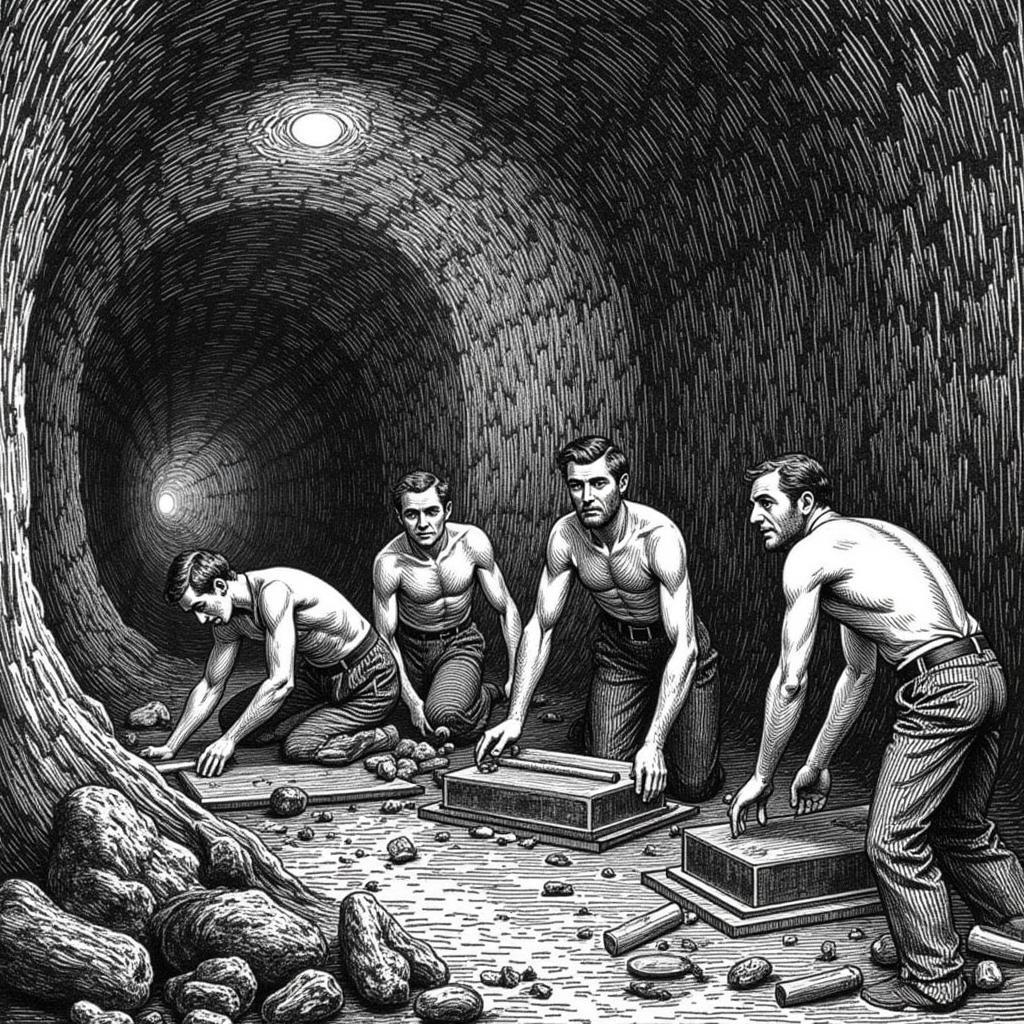The Dark Legacy of African American Convict Leasing
African American Convict Leasing, a system of forced labor that emerged after the Civil War, represents a chilling chapter in American history. This practice, rooted in exploitation and racial discrimination, trapped countless Black Americans in a cycle of involuntary servitude that often resembled slavery in all but name.
Understanding the Origins of African American Convict Leasing
Following the abolition of slavery, Southern states grappled with the economic and social upheaval caused by the sudden absence of a free labor force. Seeking to maintain control and profit from Black labor, they devised new systems of oppression. Convict leasing, born out of this exploitative desire, allowed state and local governments to lease incarcerated individuals, predominantly Black men, to private businesses. These businesses, ranging from plantations to railroads and mines, paid minimal fees for the labor, while the state profited and the convicts endured brutal working conditions.
The Economics of Exploitation: How Convict Leasing Functioned
The system was designed to be profitable for both the state and the leasing companies. States generated revenue through leasing fees, while companies gained access to a cheap and readily available workforce. This system, however, came at a tremendous human cost. Convicts were subjected to dangerous working conditions, inadequate food and housing, and brutal treatment, with little to no oversight or protection.
The Brutal Reality of Convict Leasing: Life Under the System
The lives of those subjected to convict leasing were marked by hardship, violence, and despair. Forced to work long hours in hazardous environments, convicts faced high rates of injury and mortality. Disease, malnutrition, and exhaustion were rampant, and the lack of basic medical care meant that even minor illnesses could prove fatal. Furthermore, physical and sexual abuse were commonplace, with convicts having little recourse against their tormentors. The system effectively created a new form of slavery, trapping individuals in a cycle of forced labor and abuse.
The Human Cost: Stories of Suffering and Resilience
The human toll of convict leasing is immeasurable. Families were torn apart, communities were devastated, and generations of Black Americans were denied the promise of freedom and opportunity. While records are often incomplete, the stories that have survived paint a grim picture of suffering and resilience.
 Convicts Working in a Coal Mine Under Dangerous Conditions
Convicts Working in a Coal Mine Under Dangerous Conditions
The Legal and Social Context of Convict Leasing
Convict leasing thrived in the legal and social vacuum created by the end of slavery. While the 13th Amendment abolished slavery, it included a clause that allowed for involuntary servitude as punishment for a crime. This loophole was exploited by Southern states, which enacted Black Codes – laws specifically designed to criminalize Black behavior and increase the number of Black individuals incarcerated. These laws, coupled with discriminatory enforcement practices, ensured a steady supply of convicts for the leasing system.
The Fight for Abolition: Challenging the System
Despite the immense challenges, Black communities and their allies fought tirelessly against convict leasing. Journalists, activists, and reformers exposed the system’s brutality and injustice, advocating for its abolition. Their efforts, combined with growing public awareness and changing economic conditions, eventually led to the decline and eventual demise of convict leasing in the early 20th century.
The Lasting Impact of Convict Leasing
The legacy of convict leasing continues to resonate today. Its impact can be seen in the ongoing struggles against mass incarceration, racial inequality, and economic injustice. Understanding this dark chapter of American history is crucial for acknowledging the deep roots of systemic racism and working towards a more just and equitable future.
Conclusion: Remembering and Reckoning with African American Convict Leasing
African American convict leasing stands as a stark reminder of the enduring power of racism and the ongoing struggle for true freedom and equality. By learning about this system, we can better understand the historical context of present-day inequalities and work towards dismantling the systems that perpetuate them. We must never forget the injustices of the past, and we must continue to fight for a future where such exploitation is impossible.
FAQ
-
What was the purpose of convict leasing? To provide cheap labor to Southern businesses and generate revenue for state governments after the Civil War.
-
Who were the primary victims of convict leasing? Overwhelmingly African American men.
-
How did convict leasing differ from slavery? Technically, convicts were leased as punishment for a crime, whereas enslaved people were considered property. However, in practice, convict leasing often resembled slavery.
-
When did convict leasing end? The practice declined in the late 19th and early 20th centuries, although some forms persisted in certain areas.
-
What is the legacy of convict leasing? It contributed to ongoing racial and economic inequalities and continues to inform discussions about mass incarceration.
-
How can I learn more about convict leasing? Explore historical archives, academic research, and documentaries on the subject.
-
What can I do to help address the issues related to the legacy of convict leasing? Support organizations fighting for criminal justice reform and racial equality.
Need support? Contact us 24/7. Phone: +255768904061, Email: kaka.mag@gmail.com, or visit us at Mbarali DC Mawindi, Kangaga, Tanzania.


